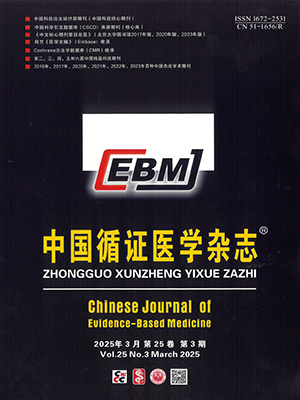Objective To assess the growth station, the upper respiratory infection frequency and consultation frequency of the geographically defined high risk neonatal population at 1-year-old based on both birthweight and gestational age.
Methods All infants admitted in our hospital from May in 2008 to May in 2009 were divided into three groups according to gestational age and birth weight, that were, group 1: born lt;32 completed gestational weeks and weighing ≥1 500 g; group 2: born after 32 completed gestational weeks and weighing lt;1 500 g; and group 3: born lt;32 completed gestational weeks and weighing lt;1 500 g. Information at 12 months corrected age about growth, the upper respiratory infection frequency and consultation frequency was collected.
Results The growth rate of weight and head circumference in group 3 were lower than that in group 1, and the length growth rate was lower than that in group 1 and group 2. Infants in group 3 suffered from more airway infections (median: 15.5) than in group 1 (12.5) and group 2 (8.5). Infants in group 3 needed more medical consultations (median: 27.5) than those in group 1(17.5) and group 2 (15.5).
Conclusions This study gives estimates for growth outcome, airway infection and consultation frequency at 12 months corrected age for very low birthweight infants ( lt;1 500 g) and for very preterm infants ( lt;32 completed gestational weeks). Gestational age and birth weight are the same important for predicting infants’ outcome and should therefore be integrated into clinical statistics.
Citation:
WANG Hua,XIONG Ying. One Year Follow-up of Very Low Birthweight Infant and Extremely Preterm Infant. Chinese Journal of Evidence-Based Medicine, 2010, 10(11): 1253-1255. doi: 10.7507/1672-2531.20100580
Copy
Copyright © the editorial department of Chinese Journal of Evidence-Based Medicine of West China Medical Publisher. All rights reserved
| 1. |
Colver AF, Gibson M, Hey EN, et al. Increasing rates of cerebral palsy across the severity spectrum in north-east England 1964-1993. The North of England Collaborative Cerebral Palsy Survey. Arch Dis Child Fetal Neonatal Ed, 2000, 83(1): F7-F12.
|
| 2. |
Wichers MJ, van der Schouw YT, Moons KG, et al. Prevalence of cerebral palsy in The Netherlands (1977-1988). Eur J Epidemiol, 2001, 17(6): 527-532.
|
| 3. |
Bhushan V, Paneth N, Kiely JL. Impact of improved survival of very low birth weight infants on recent secular trends in the prevalence of cerebral palsy. Pediatrics, 1993, 91(6): 1094-1100.
|
| 4. |
The Victorian Infant Collaborative Study Group. Improved outcome into the 1990s for infants weighing 500-999 g at birth. Arch Dis Child Fetal Neonatal Ed, 1997, 77(2): F91-F94.
|
| 5. |
吴瑞萍, 胡亚美, 江载芳, 主编. 诸福棠使用儿科学. 第6版. 北京: 人民卫生出版社, 1996: 20-391.
|
| 6. |
Hutton JL, Pharoah PO, Cooke RW, et al. Differential effects of preterm birth and small gestational age on cognitive and motor development. Arch Dis Child Fetal Neonatal Ed, 1997, 76(2): F75-F81.
|
| 7. |
Lagercrantz H. Better born too soon than too small. Lancet, 1997, 350(9084): 1044-1045.
|
| 8. |
Gutbrod T, Wolke D, Soehne B, et al. Effects of gestation and birth weight on the growth and development of very low birthweight small for gestational age infants: a matched group comparison. Arch Dis Child Fetal Neonatal Ed, 2000, 82(3): F208-F214.
|
| 9. |
Draper ES, Manktelow B, Field DJ, et al. Prediction of survival for preterm births by weight and gestational age: retrospective population based study. BMJ, 1999, 319(7217): 1093-1097.
|
| 10. |
Hack M, Fanaroff AA. Outcomes of children of extremely low birthweight and gestational age in the 1990’s. Early Hum Dev, 1999, 53(3): 193-218.
|
- 1. Colver AF, Gibson M, Hey EN, et al. Increasing rates of cerebral palsy across the severity spectrum in north-east England 1964-1993. The North of England Collaborative Cerebral Palsy Survey. Arch Dis Child Fetal Neonatal Ed, 2000, 83(1): F7-F12.
- 2. Wichers MJ, van der Schouw YT, Moons KG, et al. Prevalence of cerebral palsy in The Netherlands (1977-1988). Eur J Epidemiol, 2001, 17(6): 527-532.
- 3. Bhushan V, Paneth N, Kiely JL. Impact of improved survival of very low birth weight infants on recent secular trends in the prevalence of cerebral palsy. Pediatrics, 1993, 91(6): 1094-1100.
- 4. The Victorian Infant Collaborative Study Group. Improved outcome into the 1990s for infants weighing 500-999 g at birth. Arch Dis Child Fetal Neonatal Ed, 1997, 77(2): F91-F94.
- 5. 吴瑞萍, 胡亚美, 江载芳, 主编. 诸福棠使用儿科学. 第6版. 北京: 人民卫生出版社, 1996: 20-391.
- 6. Hutton JL, Pharoah PO, Cooke RW, et al. Differential effects of preterm birth and small gestational age on cognitive and motor development. Arch Dis Child Fetal Neonatal Ed, 1997, 76(2): F75-F81.
- 7. Lagercrantz H. Better born too soon than too small. Lancet, 1997, 350(9084): 1044-1045.
- 8. Gutbrod T, Wolke D, Soehne B, et al. Effects of gestation and birth weight on the growth and development of very low birthweight small for gestational age infants: a matched group comparison. Arch Dis Child Fetal Neonatal Ed, 2000, 82(3): F208-F214.
- 9. Draper ES, Manktelow B, Field DJ, et al. Prediction of survival for preterm births by weight and gestational age: retrospective population based study. BMJ, 1999, 319(7217): 1093-1097.
- 10. Hack M, Fanaroff AA. Outcomes of children of extremely low birthweight and gestational age in the 1990’s. Early Hum Dev, 1999, 53(3): 193-218.




